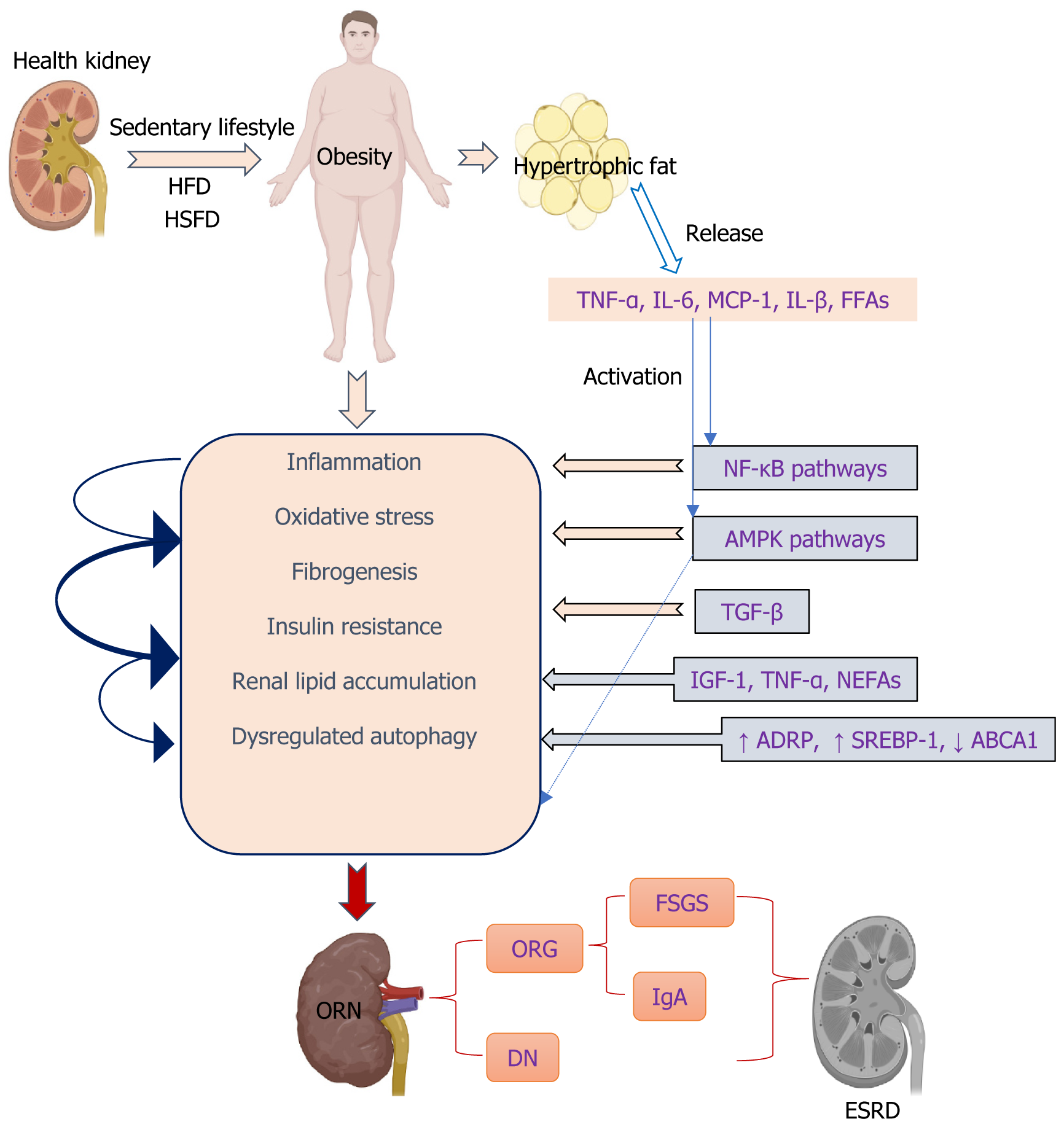Copyright
©The Author(s) 2024.
World J Diabetes. Jun 15, 2024; 15(6): 1091-1110
Published online Jun 15, 2024. doi: 10.4239/wjd.v15.i6.1091
Published online Jun 15, 2024. doi: 10.4239/wjd.v15.i6.1091
Figure 1 Clinical and pathologic characteristics of obesity-related kidney injures.
HSFD: High-sucrose and high-fat diet; HFD: High-fat diet; ORN: Obesity-related nephropathy; ORG: Obesity-related glomerulopathy; ESRD: End-stage renal disease; FSGS: Focal segmental glomerulosclerosis; IgA: Immunoglobulin A; DN: Diabetic nephropathy; ABCA1: ATP-binding cassette transporter; ADRP: Adipocyte differentiation-related protein; SREBP-1: Sterol response element binding protein-1; TGF-β: Transforming growth factor-β; NEFAs: Non-esterified fatty acids; TNF-α: Tumor necrosis factor-α; IL-6: Interleukin-6; MCP-1: Moncyte chemoattractant protein-1; IL-β: Interleukin-β; IGF-1: Insulin growth factor-1; NF-κB: Nuclear factor-kappa B; FFAs: Free fatty acids; AMPK: Adenosine 5-monophosphate activated protein kinase.
Figure 2 Summary of natural and synthetic compounds for treatment of obesity-related kidney disease.
H2S: Hydrogen sulfide; NF-κB: The nuclear factor-kappa B; AMPK: Adenosine 5-monophosphate activated protein kinase; ABCA1: ATP-binding cassette transporter; LPL: Lipoprotein lipase; OSBPL7: Oxysterol binding protein like 7; GRP55: G protein-coupled receptor 55; EPA: Eicosapentaenoic acid; IKK: IκB kinase.
- Citation: Mao TH, Huang HQ, Zhang CH. Clinical characteristics and treatment compounds of obesity-related kidney injury. World J Diabetes 2024; 15(6): 1091-1110
- URL: https://www.wjgnet.com/1948-9358/full/v15/i6/1091.htm
- DOI: https://dx.doi.org/10.4239/wjd.v15.i6.1091














